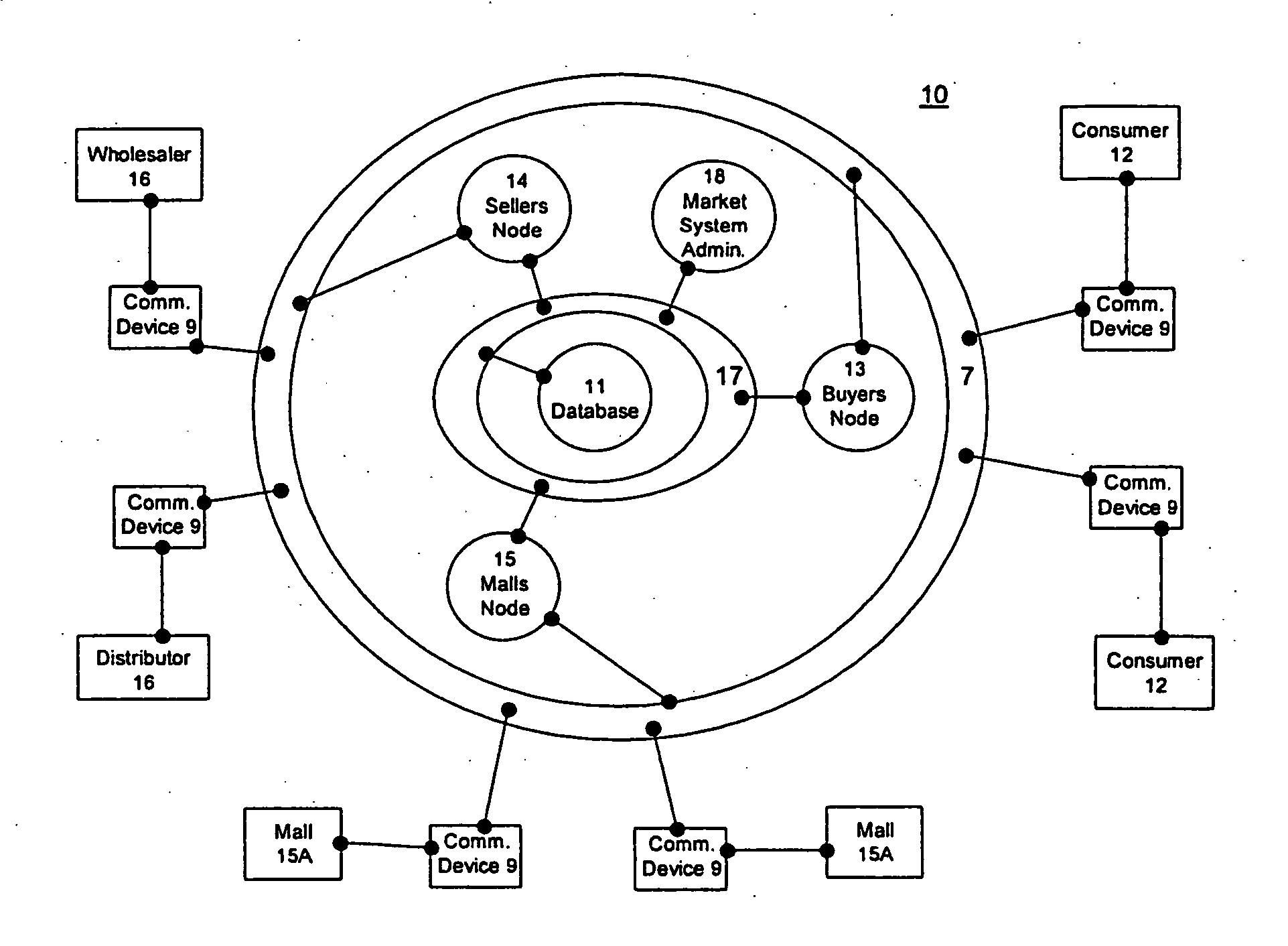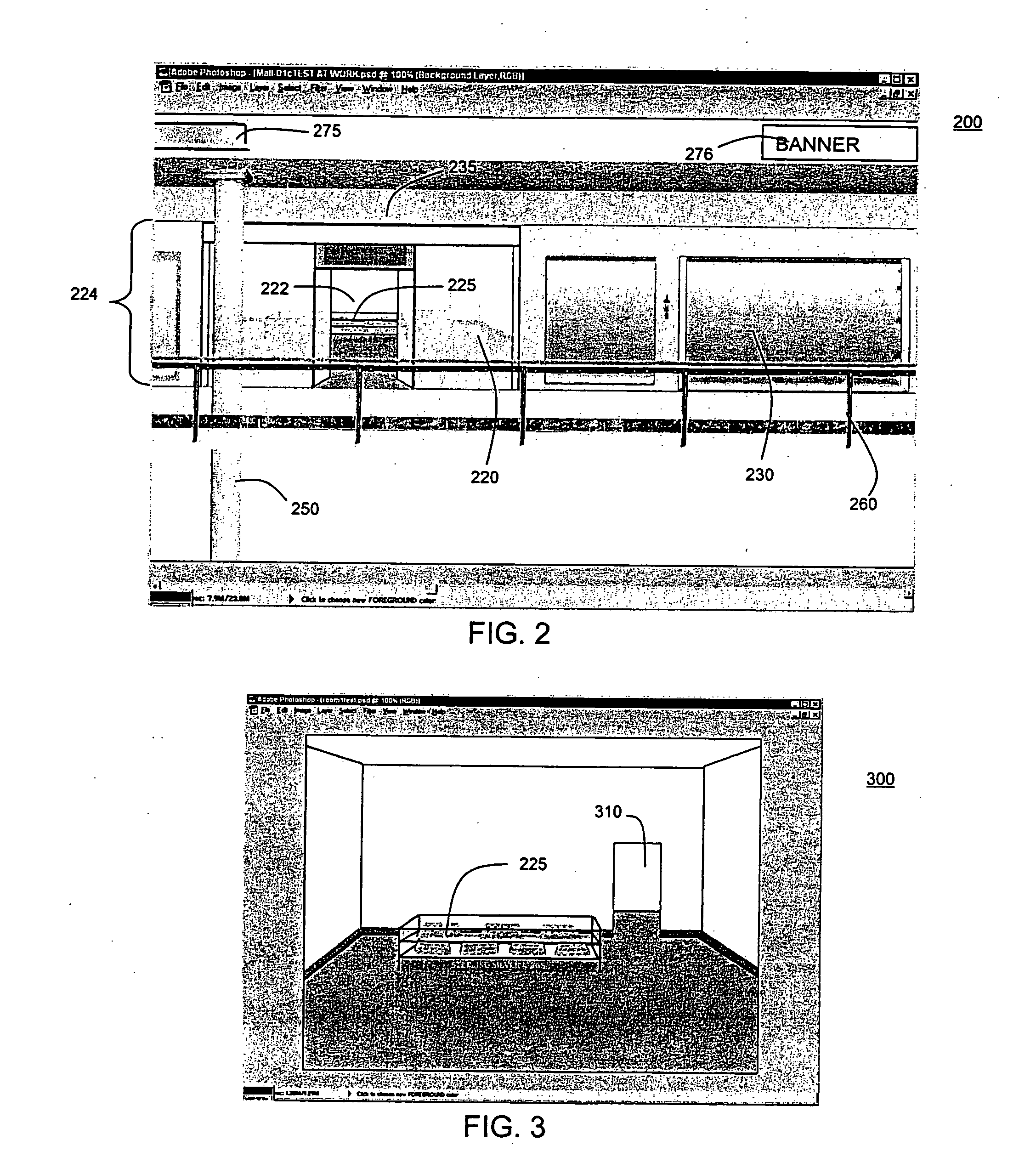Even with all of the planning that has been implemented by this corporate insurgence however,
consumer and business related problems have developed and have become more apparent as the business models are time tested.
Customer dissatisfaction is possibly the worst of the problems to arise.
One potential cause of e-commerce businesses losing sales is hosting a cumbersome and annoyingly complex
Web site.
Requiring customers to navigate through extensive forms and linked pages, defeats the most sophisticated of
Web site designs.
For
consumer or business customers alike, annoyances can include complicated registration requirements, inconsistent purchase experiences across sites, establishing and maintaining numerous “identities” (passwords and preferences) for sites hosting multiple businesses, and requiring different
payment methods at different Web sites.
Additionally, annoyance can be associated with fear of supplying personal or corporate information, fear of absent
chat room or
transaction security, and fear of being swindled by a misrepresented transaction.
A problem from the business standpoint is that customer annoyance must be accepted to a certain degree in order to repel acts of fraud.
The issue of security, though decreasing is still a large annoyance for both business and
consumer customers alike.
Businesses storing this information can use it to boost revenues and lower costs, but the very act of
data transmission opens up networks and servers to external and, more significantly, internal attacks.
However, the customer annoyance is attributed when the business receiving the information sells it to other vendors without concern for its use and most often without the customers knowledge.
Different business models have also affected the level of customer annoyance on a
Web site.
Each type of goods sold has specific inherent annoyances.
This is very different from hard goods where each sale implies manufacturing and distribution costs.
The customer annoyance of
digital goods however, is that customers usually cannot return data for a refund once purchased.
Additionally, it is often difficult or impossible to move downloaded
software from one computer to another.
Additional to the problems of customer annoyance's the business-to-consumer
topography is also presented with the classic challenge of how to draw the customer into the store, offer an engaging product, and persuade the customer to go through with the purchase.
Due to the young age of e-businesses, there is not a lot of reliable background marketing data available to produce preferred marketing schemes with any assurance of success.
It is arguable though, that more difficult is actually getting a customer to go through with the purchase.
With that many fields to fill out, the consumer may leave the store without finishing the purchase process.
For a business-to-business site, a key problem is successfully integrating with the customers business
system.
The complexity of a business-to-business site increases with the level of integration between the two business workflows.
An additional problem for a business-to-business site is caused by site developers.
Although the facility of deployment is of importance to both business partners, the ease of site use does not represent a streamlined process for the user, who is more concerned with minimizing customer annoyance.
These technologies can also cause customer annoyance.
To date, electronic wallets have not gained widespread acceptance.
The
disadvantage to wallets is first, using a wallet requires a customer to download or install the product that includes the wallet
software.
A download / install requirement causes customer annoyance by adding an extra step to the purchase process and extra files to a
client's hard drive.
Customers are also restricted to
purchasing from the computer storing the wallet.
A good number of sites already support the main wallet implementations, however the dependencies on
server support and customer downloads reduce the benefits of the wallet to a specific subset of consumers.
Since wallets are not supported across all Web sites, customers don't know if they can use their wallet at
a site until they reach the point of purchase.
If an airline provides a cookie during a
ticket purchase, an on-line music store cannot access that cookie and read that cookie's data when the customer visits the new site.
The main drawback to implementing cookie technology by an e-business is the negative image that has fostered due to the cookies being downloaded to the customers hard drive.
Additionally, the cookies usually remain in the clients folder regardless of time, thus adding unwanted
clutter to already confusing folders.
An additional source of problems for e-commerce topologies is their marketing techniques.
Despite the marketing potential of banner ads, the problems with their use are numerous.
First, a resent marketing research report states that banner advertising rates fairly low when compared to the less popular but much more effective e-mail to customers marketing method.
Next, banner exchanges are becoming so crowded that many exchanges are rotating the banners at a rate making one e-business banner unlikely to be viewed by each visiting customer.
Banners can also be distracting and often ugly with banner exchanges having no way of guaranteeing that the banner in rotation at any given moment won't clash horribly with an e-businesses site
graphics.
In addition, banners increase the
load time of Web pages.
Beside banner ads, additional marketing problems can be associated with an e-businesses Web site design.
Typically, these
mass merchant Web sites
restrict the sale of merchandise to their brands only.
The problem with limited brands is that if a customer wishes to purchase a product not in the
mass merchants product listing, the customer must access another site, or access a different e-business
search engine to find the desired product.
Both of these e-businesses have a further problem because they search for products by a product category or by the exact product name.
Another marketing problem associated with e-business Web site design is that the latest product designs are often attributed to the Web sites product renditions months after the revised products have been on the shelves of the
brick and
mortar stores.
This
delay of revising products can cause further problems if the product is discontinued, or out of inventory due to production delays or other reasons.
Additionally, e-business Web sites are typically designed to be efficient and functional but not aesthetically pleasing to customers with various preferences.
The problem of lost customers is then created if consumers with various tastes, religious afflictions, national heritage, or social status desire to shop at
a site of more comfortable and familiar surroundings.
In addition, customers of different groups or tastes may not be offered the proper products through search routines due to misinterpretations of the searched
product group.
 Login to View More
Login to View More  Login to View More
Login to View More 


